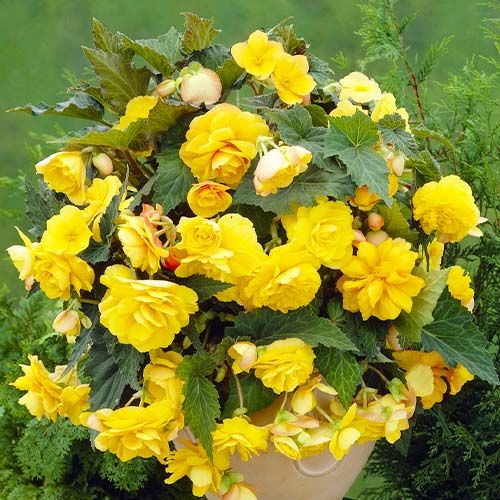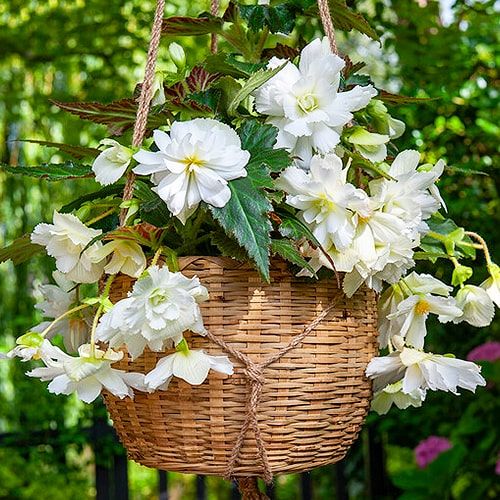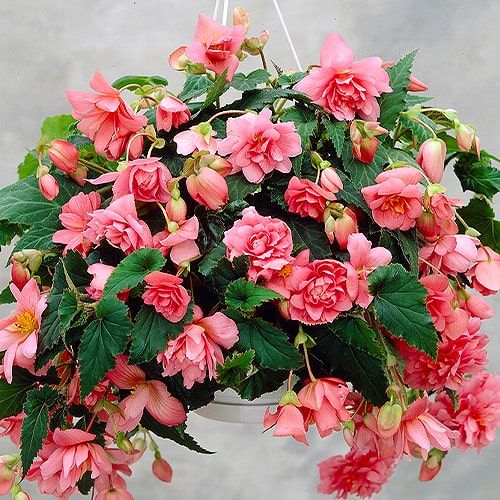Cascading (Trailing) Begonias
Cascading (Trailing) Begonias
Last Reviews
Transform Your Garden with Beautiful Cascading Begonias
If you are looking for a stunning plant that can add color and charm to your garden or home, look no further than cascading begonias. These plants, also known as trailing begonias, have long, flowing stems that cascade down from pots or hanging baskets, creating a spectacular display of flowers and foliage. In this article, you will learn all about cascading begonias, including their features and how to care for them.
Features of Cascading Begonias
Cascading Begonias are a popular type of begonia that are known for their trailing, cascading growth habit and colorful flowers. Here are some of the features of Cascading Begonias:
- Long, flowing stems that cascade down from pots or hanging baskets
- Beautiful, delicate flowers in a variety of colors, such as pink, red, white, yellow, orange, and bicolor
- Lush, green foliage that complements the flowers and adds texture and contrast to your garden or home
- Tolerant of partial shade and cooler temperatures, making them ideal for areas with less sunlight or colder climates
- Easy to propagate from cuttings, allowing you to create more plants for yourself or share with friends and family
Caring for Cascading Begonias
Cascading begonias are not difficult to care for, but they do require some attention and maintenance to keep them healthy and blooming. Follow these tips to keep your cascading begonias happy:

- Provide well-draining soil in a container with drainage holes. Avoid using soil that is too heavy or wet, as this can cause root rot and fungal diseases. You can use a potting mix designed for tuberous begonias or make your own by mixing equal parts of peat moss, perlite, and compost.
- Water regularly, but avoid overwatering and allow the soil to dry out slightly between waterings. Check the soil moisture by inserting your finger into the soil up to the second knuckle. If it feels dry, water thoroughly until the excess water drains out of the bottom of the container. If it feels moist or wet, wait until it dries out a bit more before watering again.
- Place in a bright location with filtered or indirect sunlight. Avoid direct sunlight, especially during the hottest part of the day, as this can scorch the leaves and flowers. A spot with morning sun and afternoon shade is ideal. You can also grow cascading begonias indoors near a bright window or under artificial lights.
- Fertilize every 4-6 weeks during the growing season with a balanced fertilizer. You can use a liquid fertilizer diluted to half-strength or a slow-release fertilizer applied according to the package directions. Do not fertilize during the dormant period (winter) or when the plants are not actively growing.
- Pinch back the tips of the stems to encourage branching and fuller growth. This will also help to prevent legginess and improve the appearance of your cascading begonias. You can do this once or twice during the growing season, preferably in early spring or summer.
- Propagate by taking stem cuttings in the spring or summer and rooting them in moist soil or water. Cut a stem about 4-6 inches long just below a leaf node (where a leaf attaches to the stem). Remove the lower leaves and place the cutting in a pot filled with moist soil or a jar of water. Keep the cutting in a warm and bright place until roots form, then transplant it into a larger container.
Buying Cascading Begonias
You can find cascading begonias for sale at your local nursery or online garden store. Look for healthy plants with vibrant foliage and flowers, and check for any signs of disease or pests before purchasing. You can also buy cascading begonia bulbs online or from catalogs and plant them yourself in spring after the last frost.
When choosing cascading begonias, consider the size and color of the flowers and foliage, as well as the length and shape of the stems. Some cascading begonias have single or double flowers, while others have ruffled or fringed petals. Some have plain green leaves, while others have variegated or bronze-colored foliage. Some have short and compact stems, while others have long and trailing stems. Choose the ones that suit your preference and style.
Conclusion
Cascading begonias are a beautiful and versatile plant that can brighten up any garden or indoor space. With proper care and attention, they will reward you with cascading blooms and lush foliage for years to come. Whether you buy them as plants or bulbs, you will not regret adding these charming flowers to your collection. If you are interested in these enchanting flowers, we recommend checking out crispa begonias.

















